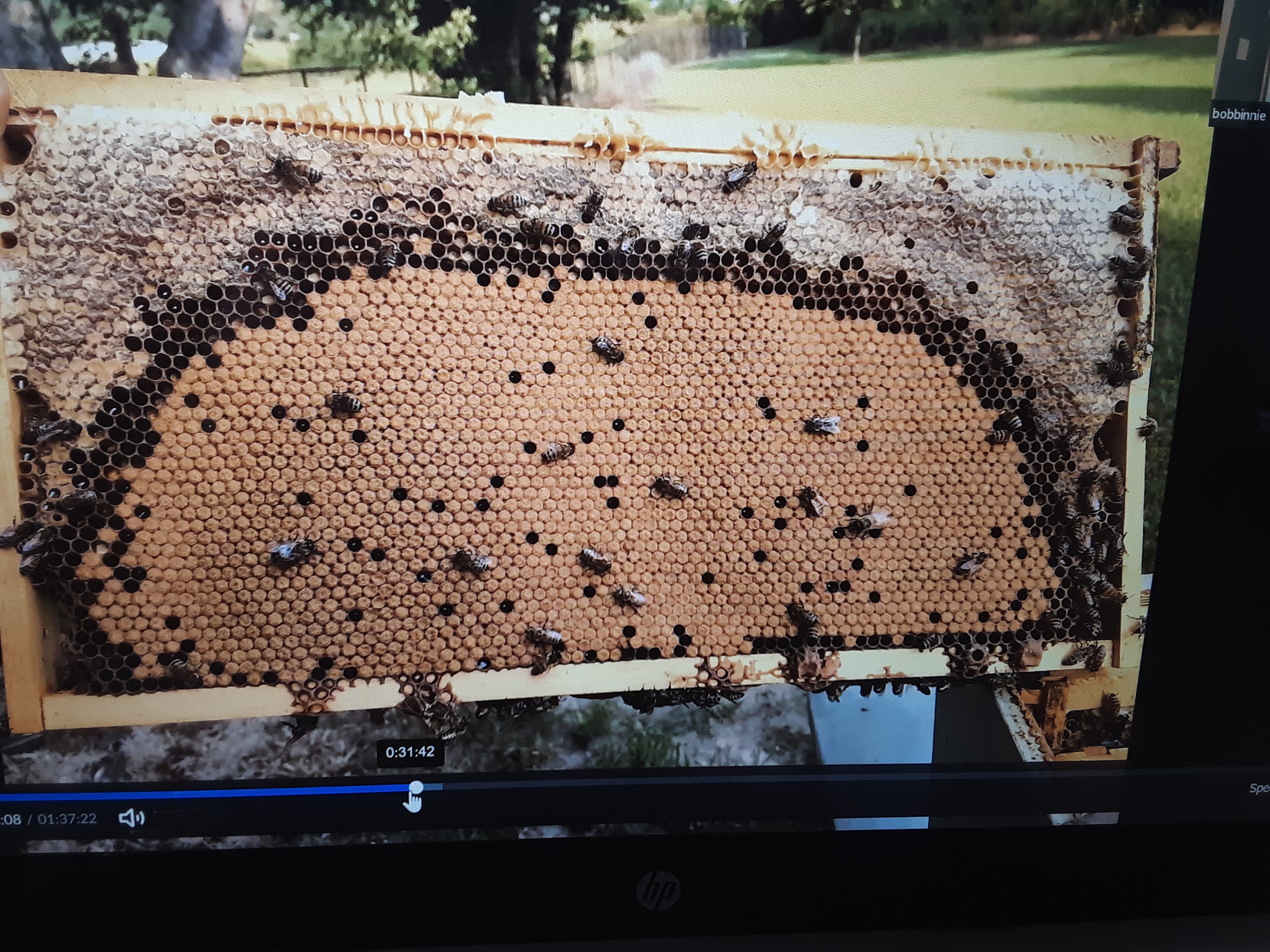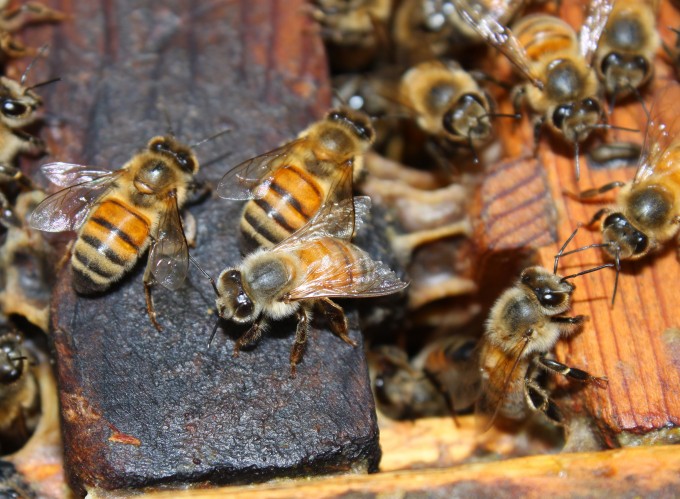Distinctly yellow and sac-like appearance in a developing queen larva; larval “skin” tough, leathery. Black color may not manifest until the prepupal queen stage following cell cappingcapping:
the covering that bees add over comb cells containing fully ripened honey or to cap brood that has reached the pupal stage; bee bread cells are not capped .
.
Black queen cell virus (BQCV) is a widespread, common virus of adult and immature honey bees. K-wingK-wing:
describes adult bee wings that remain partially open rather than tightly folded on top of the abdomen, and with hind wing over front wing, resembling the letter K; caused by tracheal mite infestation. condition may be seen in some infected adults. Drone pupae show no signs of this disease. The virus kills developing queen larvae, turning them yellowish with a sac-like outer covering and then darkening contents. The immature queen dies after the cell is cappedcapping:
condition may be seen in some infected adults. Drone pupae show no signs of this disease. The virus kills developing queen larvae, turning them yellowish with a sac-like outer covering and then darkening contents. The immature queen dies after the cell is cappedcapping:
the covering that bees add over comb cells containing fully ripened honey or to cap brood that has reached the pupal stage; bee bread cells are not capped and turns black. This virus is closely associated with Nosema infection, although virus-infected colonies typically may not show overt signs of Nosema infection. It is more commonly expressed in spring. Not apparently strongly associated with varroa mites.
and turns black. This virus is closely associated with Nosema infection, although virus-infected colonies typically may not show overt signs of Nosema infection. It is more commonly expressed in spring. Not apparently strongly associated with varroa mites.
Sacbrood virus; both have tough, leathery body covering and sac-like brood remains, but BQCV is densely blackish whereas sacbrood-infected individuals are blackened only around the outermost portion.
Snyder R. 2013. BQCV (Black Queen Cell Virus). BeeInformed. Accessed 2023. https://beeinformed.org/2013/12/04/bqcv-black-queen-cell-virus/
Moore PA, Wilson ME, and Skinner JA. 2019 updated. Honey Bee Viruses, the Deadly Varroa Mite Associates. Bee Health. Accessed 2023. https://bee-health.extension.org/honey-bee-viruses-the-deadly-varroa-mite-associates/
Grozinger C, Underwood R, and Lόpez-Uribe M. 2020. Viruses in Honey Bees. PennState Extension. https://extension.psu.edu/viruses-in-honey-bees